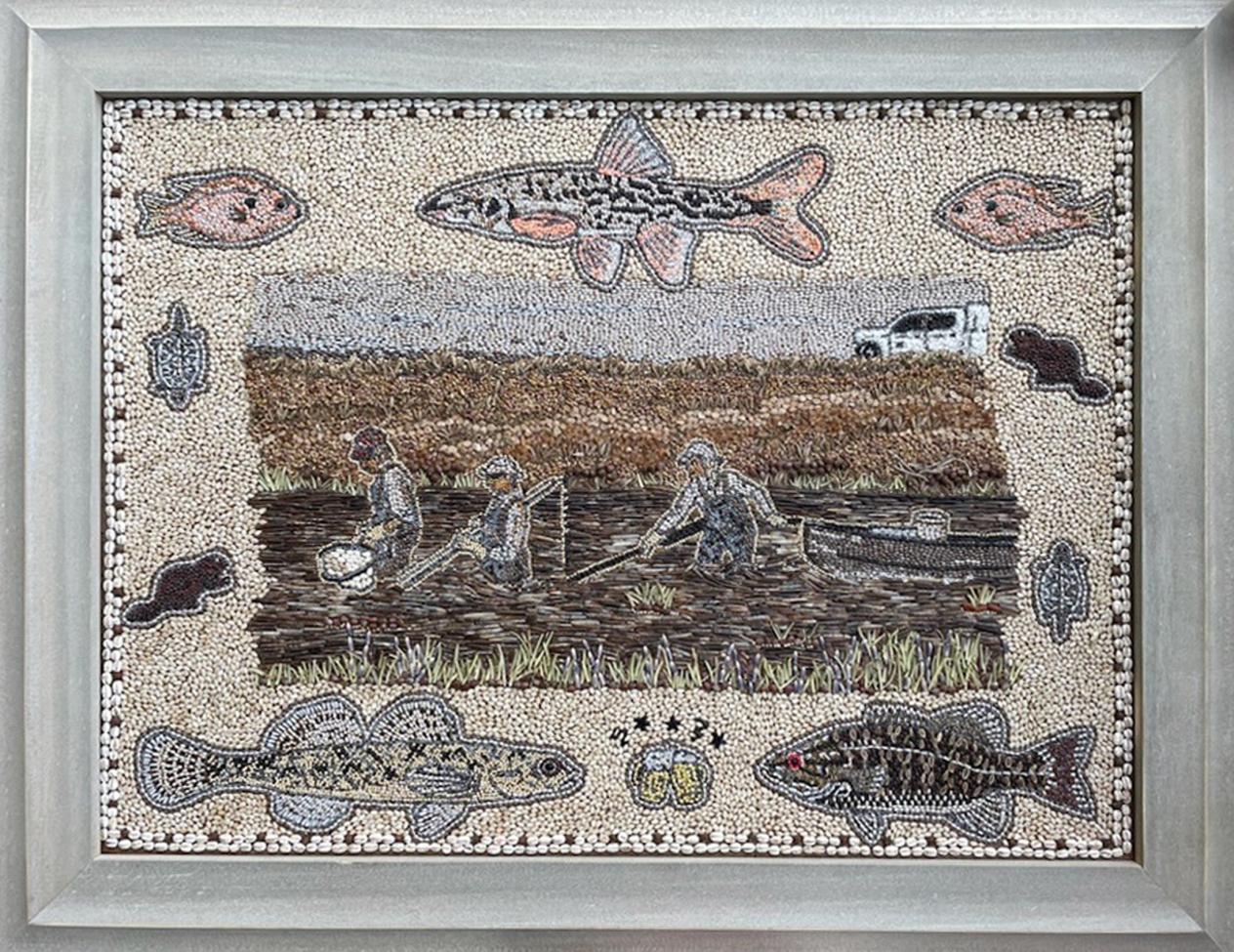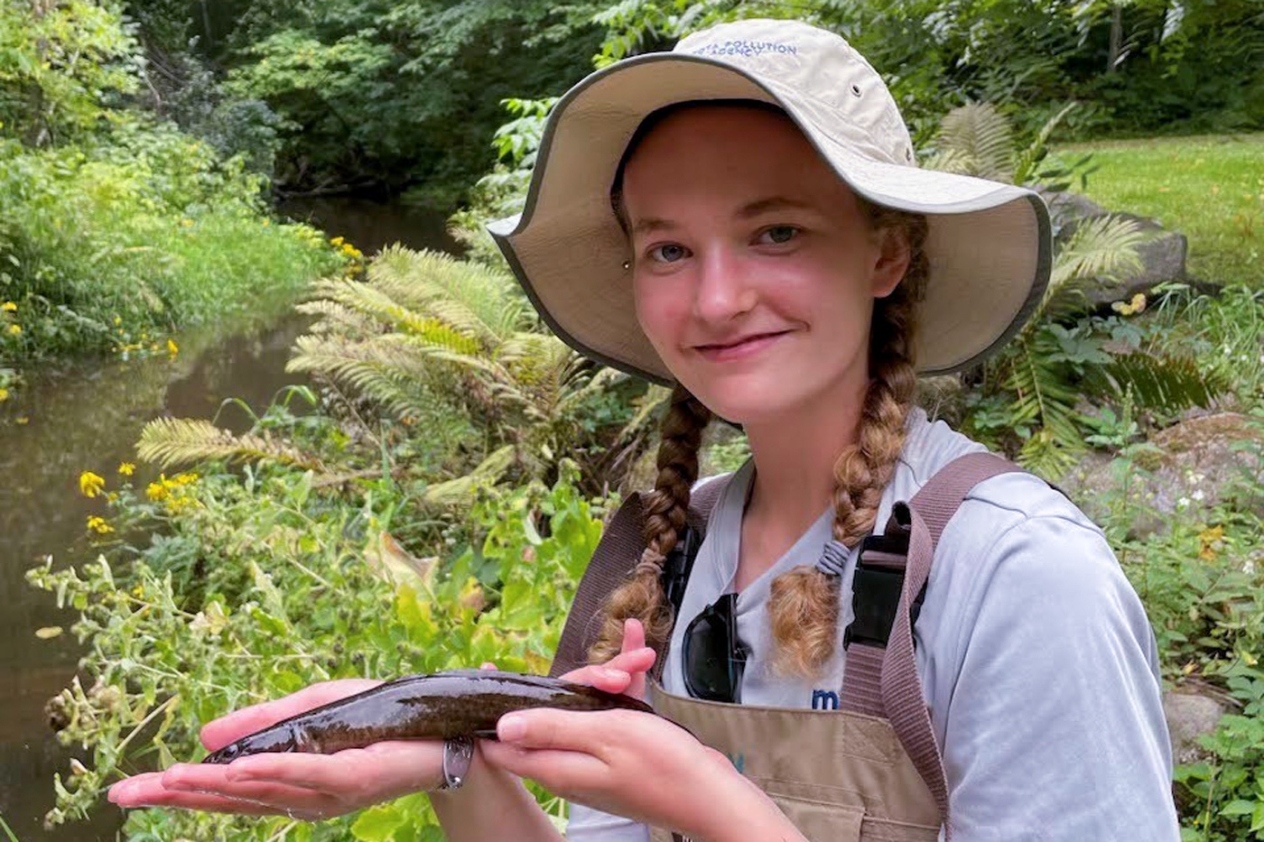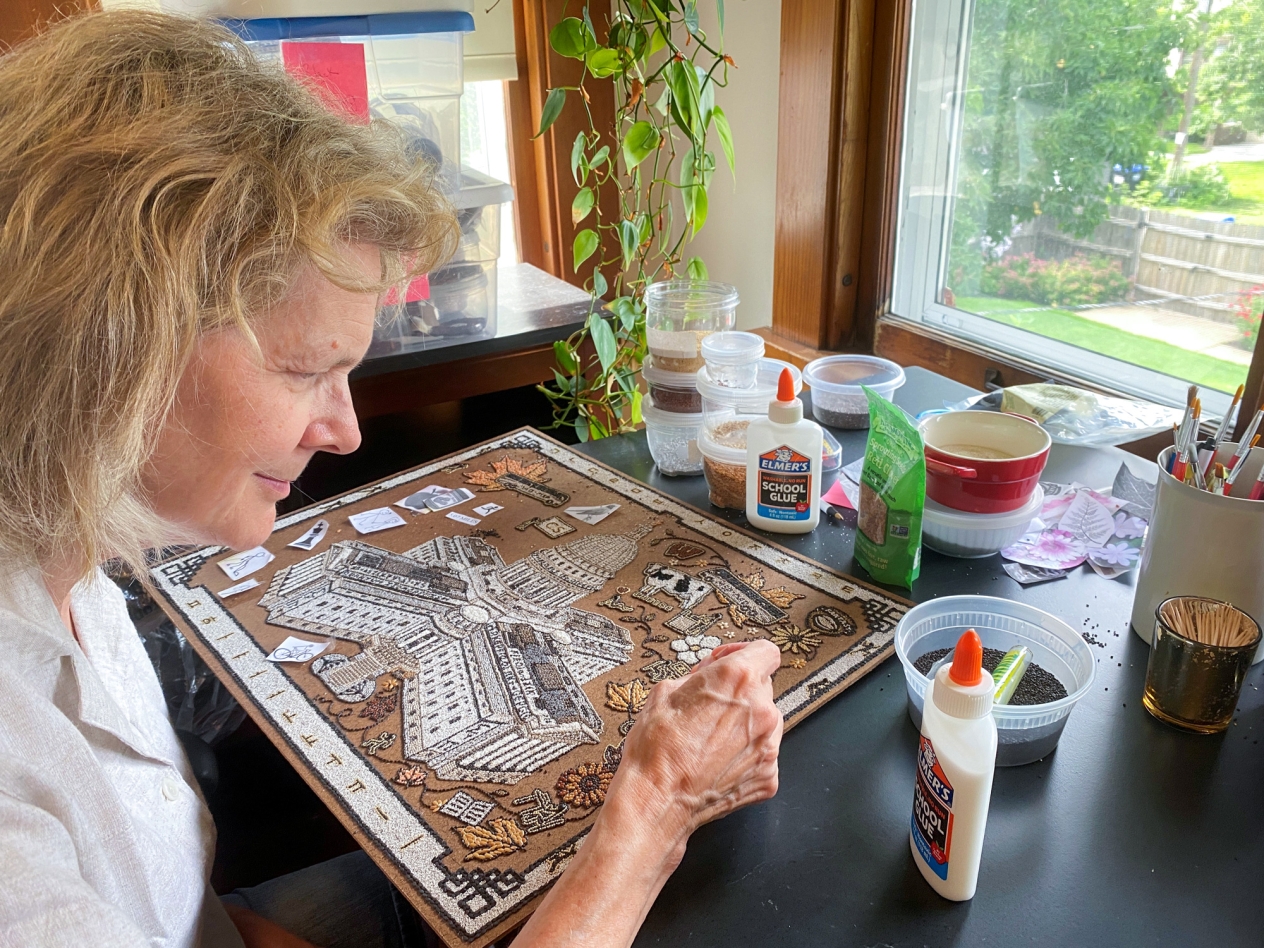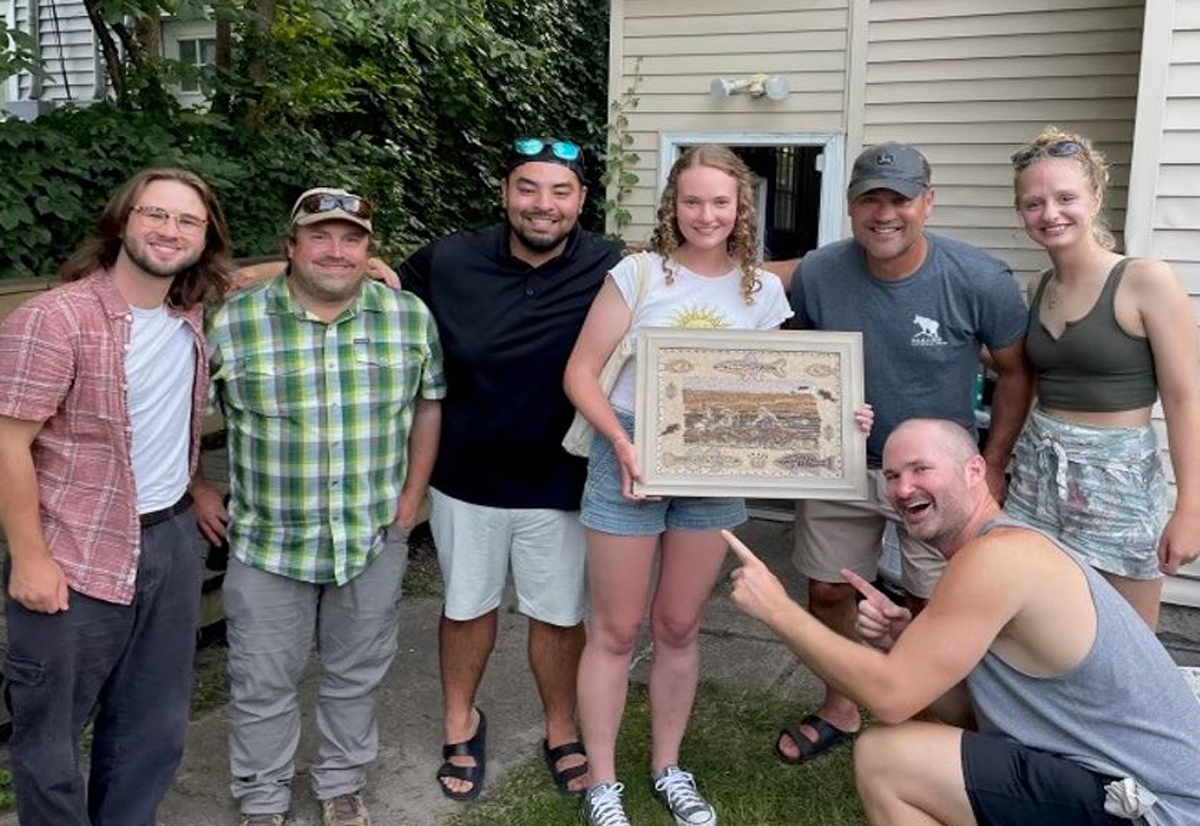
One piece of it, at least, inspired by the MPCA’s monitoring of streams and rivers
Common across all of Minnesota, the Johnny darter is too small to be a game fish and is probably most notable for its ability to thrive in disturbed or polluted waters. But it’s also the first fish Martha Young learned to identify in her summer as a student worker for the MPCA, so it merited a place on her mother’s crop art piece celebrating that work.
Same goes for the beavers, snapping turtles, clinking glasses of beer, and the curious forward lean of one of the workers captured in wild rice, amaranth, mustard, chicory, and chia seeds for the piece – all decorative and innocuous on the surface, but also elements of the story of Young’s growing appreciation for the work the MPCA does over the course of a summer.
And while art created from crop seeds has long been celebrated in the Agriculture Horticulture Building at the Minnesota State Fair, the colorful and elaborate piece from Young’s mother, Janet Krueger of Saint Paul, will go on display elsewhere at the fair, in the MPCA’s Eco Experience exhibit.

A summer of streams
As a student worker in the summer of 2023, Young found herself tromping through streams with the MPCA’s south biological monitoring unit in search of fish that would indicate the health of those streams. It’s a job that requires plenty of travel around the state, plenty of time in chest waders, and plenty of time in close contact with colleagues.
“I came into it with no fish experience — I could maybe identify a sunfish,” says Young, then a biology and environmental science major at William and Mary. “It was totally different from what I expected, but in a good way.”
A few weeks into the job, she found herself enjoying it so much, she asked her mother to commemorate the experience in crop art. Just one problem, Krueger says: “I’m very slow; it can take me six months to finish a piece.” But Young wanted to present it as a gift to her colleagues before heading back to school at the end of summer — two months away.
Action scene
Krueger has been creating crop art for about 10 years, and while she has exhibited at the Minnesota State Fair, she says she prefers a photorealistic style, which often requires a wider variety of smaller seeds than what the fair’s judges look for.
“Most of the seeds I use come from the grocery store, seed that people eat or cook with,” she says. “Sometimes I’ll go to the co-op to get alfalfa or seeds of different colors.”

Young says that the hobby has taken up an entire room of her mother’s house. She’s tried it herself, too, and presented seed art pieces to her environmental science class and a professor of marine invertebrates.
This piece, though, would require Krueger’s skill. Young provided the reference photos, including one of a trio of her colleagues electrofishing in a stream from which the main portion of the seed art piece was drawn.
But not entirely copied. “I like to do scenes with a little action, with something going on,” Krueger says. “I like the idea of looking at a picture and wondering what happens next.”
Fun on the job
In the case of this piece, the action comes from a prank the monitoring crew veterans like to play.
“When you’re in the streams, you have to be cautious about shocking other animals like beavers and snapping turtles,” Young said. “So especially when you’re new to it, you’re on edge, waiting for something to slip past your legs in the murky water.”
Knowing that, the more experienced crew members will occasionally brush a canoe paddle up alongside the rookies.
“It’d freak us out,” Young said.
For that reason, Krueger had Young pose for a photo as if she were playing the paddle prank, then inserted that pose into the seed art scene. The snappers and the beavers she relegated to the fish-filled border of the piece along with the beers that the crews — veterans and rookies alike — laughed over at the end of the day.
Deep appreciation
Krueger managed to finish the piece in time, and Young presented it to her colleagues at an end-of-summer gathering to high acclaim.
“It’s gratifying to know that the summer work was meaningful enough to Martha that she asked her mom to do this,” says Joel Chirhart, a research scientist with the MPCA.

The work was beyond meaningful to Young: After graduating from William and Mary, she’s working with the MPCA again this summer, this time as a technician.
And while Eco Experience at the fair isn’t normally a destination for seed art aficionados, the exhibit’s organizers still thought it worth including.
“I was really pleased to hear that people were touched by it,” Krueger says.
Eco Experience at the Minnesota State Fair takes place Aug. 22 to Sept. 2.